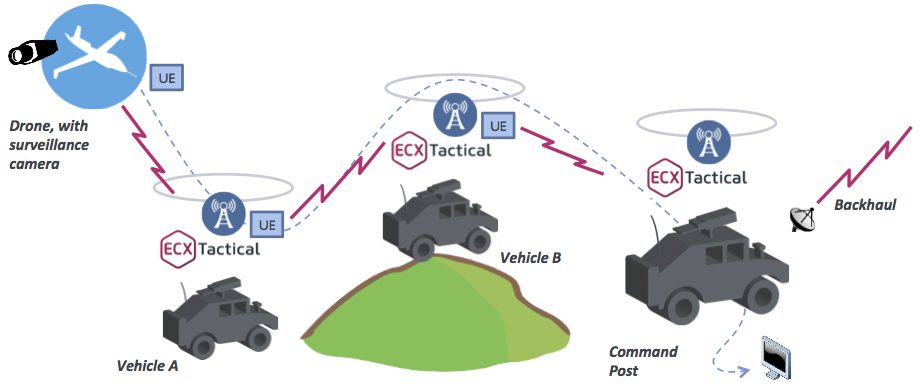Previously Published to Benzinga: The following post was written and/or published as a collaboration between Benzinga’s in-house sponsored content team and a financial partner of Benzinga.
Last month, the Intergovernmental Panel on Climate Change (IPCC) alerted the world that it was in a “code red for humanity,” calling frantically on the international community to do more when it comes to protecting the environment and ending climate change.
Make no mistake, the environment has always been part of the conversation. Whether the topic is mining, trading cryptocurrencies, processing hemp, or creating electric battery parts, the discussion revolves around creating a more sustainable future, developing greener technologies, and reducing the carbon footprint left behind by big industry and manufacturing.
But, much of the time it’s just talk, despite the need to take swift action in creating true sustainability for the future of our planet.
Greenwashing. It’s a Thing. Look it Up.
The environmental, social, and corporate governance (ESG) movement established itself under the pure intention to combat evils like climate change, social inequities and deteriorating environments — but it’s gained popularity with some organizations for all the wrong reasons.
Because companies are incentivized for being “environmentally-friendly,” savvy consumers have started to wonder whether the claims of sustainability are even being put to work — or if they’re just another creative marketing ploy by big business, as companies collect a check to “go green.”
CoinDesk explains this concept perfectly, “If you examine the largest ESG-mandated exchange-traded funds (ETFs), for example, it may not be long before you see a company listed that violates one of the fund’s ESG criteria” — a case of setting “rules without rulers.”
Green lenders and ETFs dedicated to the success of ESG-friendly organizations have found themselves complaining that it can be exceedingly difficult to measure whether a company is actually doing the right thing or not — especially in a loosely regulated domain that lacks clearly defined standards.
Green lending is expected to become a $53 trillion industry by 2025, but will ESG funds maintain a commitment to companies that genuinely want to make a difference? Although ESG funding shows no signs of slowing down its expansion efforts, it’s becoming even more difficult to verify ESG behavior.
Companies Must Prioritize ESG-Related Activities and Leave No Question on the Table
A business needs to prove its official stance on environmentally-friendly initiatives. By embracing the core values of an environmentally conscious tomorrow, a company’s true intentions will shine through.
Let’s not sugarcoat the truth. Some companies exaggerate the details of ESG efforts to appear environmentally supportive. Other organizations choose recycling and green technologies to undercut expenses, not necessarily in the name of “zero emissions.”
But what brands are beautifully self-governed, operating under a valid set of ESG principles — those truly on a mission to save the planet and bring about a greener tomorrow? Should firms with policies in place and actual plans to achieve 100% carbon neutrality in the coming decades be penalized because they have not the opportunity to get started? What about those who have optimized their entire internal infrastructure according to ESG goals but still need to use various tools and machinery to get the job done?
Society may be undergoing a categorical energy transition period, and many organizations lack the capability to go green right away — a chicken-and-egg situation. Without certain resources available, other accomplishments stagnate.
To that effect, the mining and metals industry plays a significant role in the global energy transition. The commodities it mines, such as lithium, nickel, cobalt, and graphite, are necessary for ushering in a clean energy future, requiring that it seize the opportunity to deliver on the transition to clean energy.
Nouveau Monde Takes Initiative
Nouveau Monde Graphite Inc. (NYSE: NMG) focuses on developing advanced, carbon-neutral, graphite-based material solutions as a more sustainable, high-purity alternative within lithium-ion and fuel-cell markets, used in EVs, storage for renewable energies and hydrogen applications.
The company’s guiding light is based on the fundamentals of sustainable development, ecotechnologies, and past, present, and future carbon neutrality. Global decarbonization forms the reason it even exists. Nouveau Monde works tirelessly to drive greater sustainability into the cleantech sector so that the energy transition can truly be green and just.
Nouveau Monde aims to set ESG standards and guide others on the journey.
For Nouveau Monde, ESG is more than just a business plan — it’s an actual culture and a way for the environment to thrive.
As demand for battery materials grows, Nouveau Monde is building its production capacity for advanced graphite solutions and testing these solutions for improved beneficiation technologies while reinventing the mining and advanced manufacturing sectors.
Some have noted that mining companies routinely identify ESG and sustainability issues, including environmental risks and community relations, as some of the most critical challenges they face. To combat these challenges, Nouveau Monde has initiated a number of environmental and social measures, such as the world’s first all-electric open-pit mining operation, where the company has partnered with Caterpillar Inc. (NYSE: CAT) in the development of a zero-emission solution to mining.
Actions Speak Louder than Words
In August 2021, Nouveau Monde was admitted to the Global Battery Alliance to promote sustainability and accountability across the entire battery materials value chain. The company joined other battery manufacturers, automakers, technology companies, governments, and international organizations as a thought leader and one of the first battery materials producers in the alliance.
Through this globally-backed organization, companies work to develop a more responsible, traceable and efficient battery ecosystem and low-carbon economy.
Other members of the Global Battery Alliance (GBA) include the Alliance for Responsible Mining (ARM), BMW Group (OTCPK: BMWYY), LG Chem (KRX: 051910), Microsoft (NASDAQ: MSFT), SK Innovation (KRX: 096770), Umicore (OTCPK: UMICY), UN Environment (UNEP), Volkswagen Group (OTCPK: VWAGY), Volvo Group (OTCPK: VLVLY), Google (NASDAQ: GOOGL), Renault (OTCPK: RNLSY), Honda Motor Co (NYSE: HMC), Infrastructure and Energy Alternatives (IEA), Johnson Matthey (OTCPK: JMPLY) and the World Bank Group.
In 10 years, experts predict that the electric vehicle industry will see a compound annual growth rate of 29%, as stationary energy storage solutions reach more than 41%. Both are considered core technologies in the transition to a more decarbonized society.
To learn more about Nouveau Monde and its efforts to power the global energy revolution, be sure to visit NMG.com. You can also check out the company’s “Inaugural ESG Report” with a key focus on environmental excellence and sustainability, here.
The preceding post was written and/or published as a collaboration between Benzinga’s in-house sponsored content team and a financial partner of Benzinga. Although the piece is not and should not be construed as editorial content, the sponsored content team works to ensure that any and all information contained within is true and accurate to the best of their knowledge and research. This content is for informational purposes only and not intended to be investing advice.
The author of this article owns stock in one or more of the above companies.




